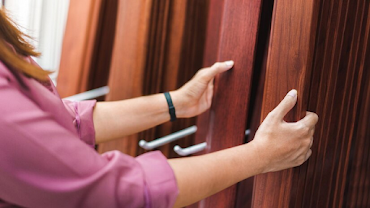Keeping Noise at Bay: The Science Behind Soundproof Doors
Introduction:
Soundproof doors play a crucial role in creating peaceful and comfortable environments by minimizing the transmission of noise between spaces. Whether in residential, commercial, or industrial settings, the ability to control sound transmission is essential for maintaining privacy, enhancing productivity, and ensuring overall well-being. This article delves into the science behind soundproof doors, exploring the principles, materials, and technologies involved in mitigating noise pollution effectively.
Understanding Sound Transmission:
Before delving into soundproofing techniques, it's essential to grasp the fundamentals of sound transmission. Sound travels in the form of waves, propagating through mediums such as air, solids, and liquids. When sound encounters a barrier, such as a wall or door, it undergoes reflection, absorption, and transmission.
Reflection: Sound waves can bounce off surfaces, reflecting back into the environment. Reflection contributes to the reverberation of sound within a space and can amplify noise levels if not properly managed.
Absorption: Some materials have the ability to absorb sound energy, converting it into heat. Absorptive materials such as acoustic foam or fiberglass panels can reduce the intensity of sound waves, thereby diminishing noise levels.
Transmission: Sound can also pass through materials via transmission, particularly if the material is thin or lacks sufficient density. Transmission is a primary concern when addressing soundproofing, as it determines the effectiveness of a barrier in blocking noise.
Principles of Soundproofing Doors:
Soundproof doors are engineered to minimize sound transmission by employing various design principles and construction techniques. Several key factors contribute to their effectiveness:
Mass: Increasing the mass of a door enhances its ability to block sound transmission. Soundproof doors are typically constructed with heavier materials such as solid wood, metal, or composite materials, which provide greater density and thickness to impede the passage of sound waves.
Sealing: Proper sealing is essential to prevent sound leakage around the door perimeter. Soundproof doors feature robust sealing mechanisms, including specialized gaskets, sweeps, and thresholds, which create an airtight barrier to minimize sound infiltration.
Damping: Damping refers to the ability of materials to dissipate sound energy by converting it into negligible vibrations. Soundproof doors may incorporate damping materials such as viscoelastic polymers or rubber isolators within their construction to reduce resonance and vibration transfer.
Insulation: Insulation plays a crucial role in attenuating airborne and impact noise. Soundproof doors often feature insulating materials such as foam or mineral wool cores, which absorb sound energy and provide thermal insulation properties.
Materials and Technologies:
Several materials and technologies are employed in the construction of soundproof doors to enhance their performance:
Mass-Loaded Vinyl (MLV): MLV is a dense, flexible material consisting of vinyl polymer loaded with barium sulfate or other heavy particles. MLV sheets are commonly used as an additional layer within soundproof doors to increase mass and improve sound insulation properties.
Acoustic Glass: Acoustic glass incorporates laminated layers with varying thickness and acoustic interlayers to reduce sound transmission through windows and glazed door panels. It provides enhanced noise reduction while maintaining visibility and natural light transmission.
Acoustic Seals: High-performance acoustic seals are designed to eliminate gaps and prevent sound leakage around door frames and edges. These seals are made from resilient materials such as silicone, neoprene, or EPDM rubber, providing excellent compression and resilience properties.
Soundproofing Inserts: Soundproofing inserts, such as fiberglass or mineral wool panels, are integrated into door cavities to enhance sound absorption and insulation. These inserts effectively dampen sound vibrations and improve overall acoustical performance.
Conclusion:
Soundproof doors play a vital role in creating tranquil and comfortable environments by mitigating noise pollution and preserving privacy. Through the integration of soundproofing principles, materials, and technologies, these doors effectively block the transmission of sound waves, providing occupants with peace and quiet amidst noisy surroundings. From residential bedrooms to commercial offices and recording studios, soundproof doors offer a versatile solution for controlling sound transmission and enhancing acoustic comfort. By understanding the science behind soundproofing and selecting appropriate door solutions tailored to specific requirements, individuals and businesses can enjoy the benefits of a quieter and more harmonious environment.



Comments
Post a Comment